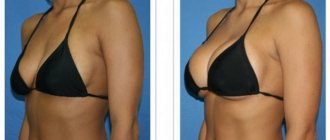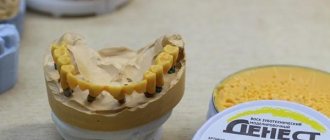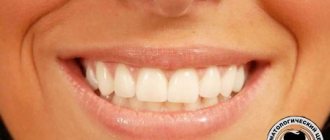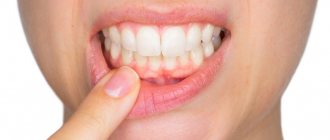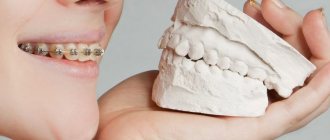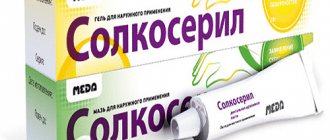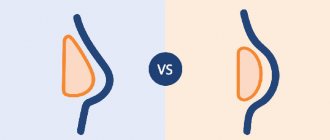The Natrelle line of breast implants comes in a wide variety of shapes and sizes. Each woman can choose the optimal type of product with which she can achieve the desired result and radically change the appearance of her breasts. All products are manufactured using a unique technology, which allows us to achieve high safety indicators and minimize the risk of complications.
| INSPIRA style | Style 410 | Style 510 |
The surface of Natrelle implants has a special textured structure, which was obtained using BIOCELL™ technology
It has the following features:
- Allows you to reduce the severity of capsular contracture.
- Allows you to avoid displacement of the implant.
- Increases fixation strength.
Natrelle implants have a special shell design:
- The implant is completely covered with a special barrier layer, which is made using INTRASHIEL™ technology, which minimizes the diffusion of the silicone filler.
- The shell is made of high quality silicone, which increases reliability and reduces the risk of rupture.
- Due to the patented technology of fixing the patch, it is possible to achieve high strength.
The safety of Natrelle implants is fully proven.
The results of the operation continue to please the woman for a long time. According to the survey, 97% consider surgery to be the right choice for themselves and note self-confidence, attractiveness and enjoyment of life.
Natrelle implants come in a very wide variety, so every woman can choose the optimal type of product based on her preferences.
Natrelle Round Breast Implants
The Allergan Natrelle Inspira line of round implants has the following features:
- In order to reduce the likelihood of contouring, the optimal volume of filler was selected.
- Due to the unique surface structure, it is possible to reduce the likelihood of capsular contracture to a minimum.
- A special barrier layer reduces the likelihood of filler diffusion.
- A durable shell increases the reliability of the implant.
- The line has a wide variety of products.
- The implant shell can be smooth or textured.
- There are two types of implant filling: high-quality silicone gel and Soft Touch™ gel.
- The implant profile is presented in 5 options.
- Wide range of sizes.
- Wide variety of projections.
Natrelle anatomical breast implants
- Due to the anatomical shape of the implants, it is possible to obtain a natural result and a proportional breast shape, and also preserve them for a long time.
- The special surface texture obtained using BIOCELL™ technology reduces the likelihood of rotational displacement of the implant and prevents the development of capsular contracture.
- Anatomical implants are characterized by minimal gel diffusion due to a special barrier layer made using INTRASHIEL™ technology.
- The implant has special marks that allow the surgeon to correctly position it and give the breast the desired shape.
Natrelle anatomical breast implants are available in 12 options. The patient can choose from 4 different projections and 3 height options. There are two types of implant filling: high-quality silicone gel and Soft Touch™ gel.
Anatomical implants filled with two types of gel
- The anatomical shape allows you to achieve a natural, proportional result.
- Due to the beveled edges and concave base, the implant fits perfectly and is not noticeable when palpating the breast.
- The filling of the implant is represented by two types of Tru Form Dual Gel. At the back is a cohesive gel that can remember its shape. In the front part, the gel is denser, due to which it is possible to maintain the projection of the implant.
- The special surface texture obtained using BIOCELL™ technology reduces the likelihood of rotational displacement of the implant and prevents the development of capsular contracture.
- Anatomical implants are characterized by minimal gel diffusion due to a special barrier layer made using INTRASHIEL™ technology.
- The implant has special marks that allow the surgeon to correctly position it and give the breast the desired shape.
Eurosilicone implants
The first Eurosilicone laboratory appeared in 1988.
Its founder, Donald McGahn, set the main goal to organize production and make the company an industry leader. In 1997, they merged with another manufacturer, Europrotecs, and two years later moved their headquarters and all production to the French town of Apt. In 2004, the company merged with MEDICOR Ltd with the goal of becoming a world leader in the production of breast implants and other medical products for plastic surgery. Today Eurosilicone is the largest breast implant company in Europe and the third largest in the world. It produces 800 thousand endoprostheses per year, employing about 300 specialists in production.
Eurosilicone implants (manufactured by EUROSILICONE SAS, France) have undergone research/testing for safety indicators in the Russian Federation according to the procedure established by law and are declared. Declaration dated May 24, 2018 No. ROSS.FR.MG11D13761 (valid until May 23, 2021). They have been registered on the territory of Russia and are approved for use on the basis of RU dated 06/09/2010 No. FSZ 2010/07171. The endoprostheses comply with the requirements of ISO (international product manufacturing standard) and EU standards, as evidenced by the CE certificate confirming the compliance of the implants with the requirements of Medical Device Directive 93/42/EEC.
American silicone NewSil is used as the starting raw material in production. Both the shell and the cohesive gel are made from it. The company uses its own laboratory to develop implants using innovative technologies. Features of Eurosilicone implants include a thirteen-layer 450-micron shell with Nusil barrier properties, which prevents the filler from sweating. Each of them differs in density and strength. The implant is reliably protected from ruptures. Even in the event of mechanical damage to the shell, the cohesive gel will not penetrate outside.
The process innovation lies in the texture creation process. The relief is created by molten silicone, onto which sodium chloride crystals are applied. After the polymer mass has hardened, the workpiece is sent to the oven for polymerization. The process is repeated several times. This technology makes it possible to create a surface that ensures optimal encapsulation of the implant in the postoperative period and prevents rotation, that is, rotation of the endoprosthesis and securely fixes it in a given position.
There are four types of implants in the Eurosilicone line:
- Paragel
- 139 modifications of round endoprostheses.
Presented in two series : Sculpturale
and
Cristalline
with a textured surface. An impermeable liner is placed under the outer shell layer. - Vertex
- anatomically shaped, includes an additional plate that is sewn to the broad chest muscle. In this way, its displacement is prevented and reliable fixation is ensured. - Aptex
- anatomically shaped with a jelly-like cohesive filler and a Nusil shell. - Komuro
is an anatomically shaped low-profile implant that is easy to install through an endoscopic micro-incision in the armpit. This is the most gentle way to install an implant.
Eurosilicone provides a lifetime guarantee on all medical products. Each implant has a serial and identification number. It is entered into a database and tracked from the moment the operation is completed. Feedback is established between the company and patients. Previously manufactured implants have been tracked for over ten years. During this time, no complications related to the quality of endoprostheses were identified.
Types of implants for mammoplasty: round and anatomical implants
Currently, there are two types of implants for mammoplasty on the beauty market, each of which has its own characteristic features:
- Round implants allow you to maximize breast volume and even lift it. Another important advantage of these implants is their ease of installation;
- Anatomical or teardrop-shaped implants for mammoplasty currently allow you to achieve the most natural results of breast correction, they are also optimal for flat chest augmentation, which is why aesthetic surgeons very often use them in their daily practice.
Sebbin implants
The laboratory developing Sebbin brand implants was organized on the basis of the Silicone Medical company, which has been operating since 1979. Groupe Sebbin (France) released the first batch of products in 1986.
Since 2010, after a change in management, the main investments were made in scientific development, which resulted in the modernization of production and the production of new Lux class implants. They meet European and international standards of the highest quality standards. The company is developing a technique for digital modeling of endoprostheses, and nanotechnology has been introduced into the production of implant shells.
SEBBIN TM products are certified according to the ISO-9001 and ISO-13485 system and comply with European and Russian standards.
Features of Sebbin implants include an eight-layer main shell and an additional protective shell that prevents the filler from sweating.
The endoprostheses are filled with cohesive gel Naturgel™ from the American company NuSil Technology. Patients are offered implants with three types of filler: classic, soft (SoftTouch) and high density. The products are available in three types of surface: microtexture, macrotexture and smooth silicone.
McGhan (Natrelle) 410
McGahn style 410 implants are available as anatomically shaped elastomers. This line is represented by 240 possible options, differing from each other in profile height and implant diameter. The filler of this style of implants can be a highly cohesive or flowable filler (the latter has the SOFT TOUCH memory property). Style 410 endoprostheses are intended for breast augmentation in patients with a thin build, with a narrow chest, and who are performing this operation for the first time.
BellaGel implants
BellaGel breast implants are manufactured by HANSBiomed Corp., which has been developing and introducing medical products into production since 2001. It is located in Seoul, Republic of Korea and is part of the medical equipment and consumables industry. Hans Biomed has 318 employees and sales of US$67.28 million. The corporate family includes six companies.
Today, its structure includes headquarters, a tissue engineering laboratory and production facilities with a total area of 5950 sq.m. HansBiomedCorp. develops and improves materials for silicone implants and tissues for allotransplantation.
The company's main activities are biotechnology. Medical products are certified according to European, Chinese and Russian quality standards. Production complies with FDA ISO requirements. BellaGel breast implants are the first among Asian manufacturers to receive European quality certificates and CE marking. Control over the production of endoprostheses occurs at all stages of the technological process.
The production uses silicone from Applied Silicone Corp., whose products are approved by the FDA (US Food and Drug Administration) and recognized as safe for use in the medical field.
Features of BellaGel implants include a multilayer shell, which is resistant to mechanical stress and prevents the filler components from sweating.
The sheath is manufactured from FDA Master File PDMS. The smooth implant shell has a five-layer structure. Textured endoprostheses have six of these layers. The filler of the implants consists of 95% cohesive gel. Refers to a high-density gel with good “shape memory,” thereby ensuring rapid restoration of the implant after compression or pressure.
Features of choosing high-quality implants for mammoplasty
Hundreds of women around the world turn to plastic surgeons every day with one goal - to make their breasts more beautiful.
Augmentation mammoplasty is a surgical procedure to enlarge the breast using implants.
It is the choice of the latter that largely influences the outcome of the operation. There are quite a large number of implants for mammoplasty on the aesthetic medicine market today, but the best plastic surgeons prefer to trust trusted manufacturers and products. Natrelle™ implants are exactly that, which is why most plastic surgeons choose them.
Implants for mammoplasty:
- types of implants for mammoplasty: round and anatomical implants;
- features of round implants for mammoplasty Natrelle™;
- features of anatomical implants for mammoplasty Natrelle™.
Polytech implants
POLYTECH Health & Aesthetics GmbH was founded in 1986, and already in 1995 it became the first manufacturer of breast implants in Europe to pass all quality and safety tests and receive permission to use the CE mark - the European mark of conformity to standards. Only 3 years later, such verification was made mandatory for all manufacturers of products in the European Union. In 2003, POLYTECH breast implants received the highest safety category (Class III) for medical devices and were certified to ISO 9001 and 13485 for production and quality management.
The headquarters and production plant are located in the same city - Dieburg, near Frankfurt am Main (Germany). The company constantly holds conferences and seminars with plastic surgeons, and organizes master classes. Today the philosophy of this company is the pursuit of excellence.
The company's product line includes 833 modifications of thoracic endoprostheses with three types of surfaces, four shapes and all projections. Features of POLYTECH® implants include:
- Microthane®
is a micropolyurethane foam coating (MPPU) of the silicone shell of endoprostheses, which prevents the development of capsular contracture and rotation, that is, displacement of the implant. - DiagonGel® 4Two®
are implants that use two types of gel fillers of different densities, with tactile sensations as close as possible to natural breast tissue. - B-Lite
® - innovative lightweight endoprostheses. - Custom Made Implants
is a program in which implants in complex cases are custom-made using 3D modeling.
POLYTECH® breast implants are produced in four shapes: Même (hemispherical with a round base), and three anatomical Replicon (with a round base), Opticon (with a short base), Optimam (with an oblong base).
The manufacturer’s line includes three types of implant surfaces:
- Microtextured - MESMO® sensitive™;
- POLYtxt® - with macrotexture;
- Microthane® - made from micropolyurethane foam.
Each patient who receives POLYTECH® breast implants is given a lifetime warranty on the medical product under the program.
Reasons for replacing breast implants
It is difficult to determine exactly how long a breast implant will be used after its installation. Even an experienced surgeon cannot predict this. After 10-12 years, it is worth having a consultation with a plastic surgeon and discussing with him whether a repeat operation is necessary and whether there are indications for it.
Modern materials and technologies make it possible to extend the service life of implants to life, but often indications for re-plasty arise not only because of the wear of the prostheses. Therefore, doctors determine a number of indications for re-intervention, in which they replace implants with new ones, including those made of other materials, shapes or sizes.
Aging of implants
Any products have their own service life - they gradually age, especially if they are saline-filled implants. The rate of change in the prosthesis itself depends on various factors, including the patient's immune system's response to a foreign substance, the location of the implant, age, activity level, and external influences on the breast. When materials age, there is a higher chance of developing complications due to shell destruction, shape deformation, volume reduction due to leakage and tissue reaction to the leaking composition.
Changing aesthetic preferences
Sometimes women want to change their breast size or shape, which requires a different type of prosthesis. In these cases, there are indications for re-plasty with the replacement of implants with new ones. But a repeat operation is possible only after a certain period of time after the first intervention, so that there is time for tissue restoration, elimination of swelling and healing of scars at the incision sites.
Age-related changes in body tissue
With age, the contours of the body, the ratio of muscle and fat tissue change, the elasticity of the skin and ligaments decreases, which leads to sagging of the prosthesis and a change in the shape of the breast. In this case, the implant itself does not change in any way, but the tissues surrounding it undergo age-related, hormonal, and metabolic changes that require correction. In addition, the condition of the breasts after prosthetics can be affected by the process of breastfeeding, tissue changes during pregnancy, sudden fluctuations in weight, wearing inappropriate underwear and many other external factors.
Formation of complications
The most serious reason why a repeat operation is needed with complete removal or replacement of prostheses even before the end of their service life is the development of complications. Sometimes no one can predict how the body will react to a foreign body; the implant may be rejected, damaged, deformed, and then efforts must be made to eliminate all complications by performing re-plasty.
McGhan (Natrelle) 510
Natrel style 510 implants are ideal for performing augmentation mammoplasty for women with the following anatomical features:
- tubular breast;
- a thin layer of soft tissue;
- Poland syndrome.
The line of this style is represented by 39 product variants, differing in the following characteristics:
- good fit to tissues due to the concave shape of the back surface;
- by combining two types of gel in one implant, which helps maintain its shape without contouring the edges of the endoprosthesis through the skin.
How do dental implants take root?
What material are dental implants made of? The answer to this question will help us understand why they take root well. Almost all of the newest dental implants are made from titanium. This unique material is ideal for the manufacture of artificial tooth roots, since it is not perceived by the human body as something foreign and is not itself subject to the destructive effects of the surrounding biological environment. But the most important thing is that it can reliably fuse with the jawbone. These unique properties of titanium solved the problem of rejection and made implantation a reliable and durable technique. However, in very rare cases when a patient is allergic to titanium dental implants, zirconium dioxide is used as a base to make the prosthesis.
How long does it take for a dental implant to take root? Experts believe that the survival of dental implants is an individual process. The timing of osseointegration depends on the area of the dentition in which the implantation was performed, as well as on the quality of the bone tissue. In general, the healing of dental implants lasts from three months on the lower jaw and up to six months on the upper jaw. If the implantation is successful, then removal of the prosthesis becomes almost impossible, which proves the reliability of the structure. What is the survival rate of dental implants that worries many patients? It varies among different manufacturers, but in general it does not exceed 5%. In addition, the success of the operation is also influenced by the skill of the implant surgeon, so the choice of dentistry should be approached with special care.
Polyurethane implants. What are they and why are they needed?
In addition to silicone, plastic surgeons may offer you to install polyurethane-coated breast implants. The quality and basic properties of polyurethane endoprostheses correspond to silicone analogues, but the price is slightly higher. Their main difference is that the polyurethane shell practically does not slip in the tissues of the body. Polyurethane implants are most often used in repeated plastic surgeries to completely eliminate displacement (rotation) of the endoprosthesis.
